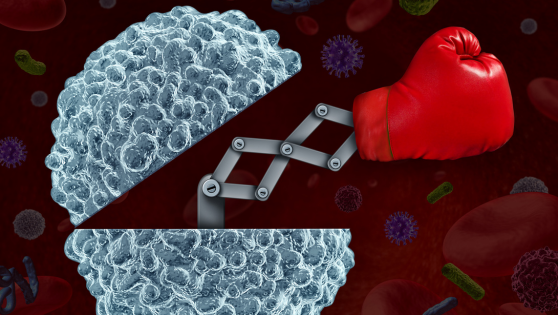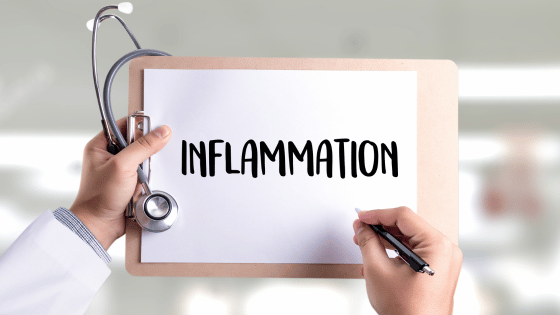Introduction
Imagine waking up every morning with your eyes feeling like sandpaper and your mouth as dry as a desert. You reach for water, but the relief is only temporary. This scenario is a daily reality for many individuals living with Sjögren’s Syndrome.
Sjögren’s Syndrome is an autoimmune disorder that primarily targets the body’s moisture-producing glands, leading to persistent dryness in the eyes, mouth, and other parts of the body. This chronic condition can significantly impact daily life, making even simple tasks challenging and uncomfortable.
Understanding Sjögren’s Syndrome is crucial for several reasons. For those living with the condition, knowledge can empower better management of symptoms and improve quality of life. For others, awareness can foster empathy and support for friends, family members, and colleagues who might be dealing with this often invisible illness. In this post, we’ll delve into the details of Sjögren’s Syndrome, exploring its symptoms, causes, risk factors, and more, to shed light on this complex and often misunderstood condition.
What is Sjögren’s Syndrome?
Sjögren’s Syndrome is a chronic autoimmune disorder in which the body’s immune system mistakenly attacks its own moisture-producing glands. This condition primarily affects the salivary and lacrimal glands, which are responsible for producing saliva and tears, respectively. As a result, individuals with Sjögren’s Syndrome often experience significant dryness in the mouth and eyes, among other symptoms.
The impact of Sjögren’s Syndrome on the body extends beyond just the moisture-producing glands. It can also affect other organs and systems, including the skin, joints, lungs, kidneys, nerves, and digestive organs. This widespread effect can lead to a variety of symptoms and complications, making the condition challenging to manage.
There are two main types of Sjögren’s Syndrome:
- Primary Sjögren’s Syndrome: This form occurs on its own, without the presence of any other autoimmune disease. It is characterized by the direct and exclusive involvement of the moisture-producing glands, leading to the hallmark symptoms of dry eyes and dry mouth.
- Secondary Sjögren’s Syndrome: This form occurs in conjunction with another autoimmune disease, such as rheumatoid arthritis or lupus. In addition to the symptoms of Sjögren’s, individuals with secondary Sjögren’s Syndrome also experience the symptoms associated with their other autoimmune condition.
Understanding the distinction between primary and secondary Sjögren’s Syndrome is important for diagnosis and treatment, as it influences the overall management approach and the potential complications that need to be addressed.
Symptoms
Sjögren’s Syndrome manifests through a variety of symptoms, which can range from mild to severe and significantly impact daily life. The most common symptoms include:
- Dry Eyes: Individuals often describe a gritty or burning sensation in their eyes, which can lead to redness, irritation, and sensitivity to light. Prolonged dryness can also increase the risk of eye infections and damage to the corneal surface.
- Dry Mouth: A persistent feeling of dryness in the mouth, known as xerostomia, can make swallowing, speaking, and tasting food difficult. This dryness can also contribute to an increased risk of dental cavities, gum disease, and oral infections.
- Fatigue: Chronic fatigue is a prevalent symptom in Sjögren’s Syndrome, often leaving individuals feeling exhausted even after adequate rest. This fatigue can be debilitating and affect overall quality of life.
- Joint Pain: Many people with Sjögren’s Syndrome experience pain, stiffness, and swelling in their joints, similar to symptoms seen in other autoimmune conditions like rheumatoid arthritis.
In addition to these common symptoms, Sjögren’s Syndrome can also affect other parts of the body, leading to less common symptoms, such as:
- Skin: Dry, itchy skin and rashes can occur, sometimes resembling other dermatological conditions.
- Lungs: Respiratory issues, including a chronic dry cough and, in severe cases, interstitial lung disease, can develop.
- Kidneys: Kidney problems, such as interstitial nephritis, can arise, potentially affecting kidney function.
- Digestive System: Symptoms can include acid reflux, difficulty swallowing, and an increased risk of gastrointestinal infections.
- Nervous System: Some individuals may experience peripheral neuropathy, characterized by numbness, tingling, or pain in the extremities.
- Vascular System: Vasculitis, an inflammation of blood vessels, can occur, leading to various complications depending on the affected vessels.
The severity and presentation of these symptoms can vary widely among individuals with Sjögren’s Syndrome. Some may experience only mild discomfort, while others might have severe, life-altering symptoms. The variability in symptom severity and the wide range of possible manifestations make Sjögren’s Syndrome a complex condition to diagnose and manage effectively.
Causes
The exact cause of Sjögren’s Syndrome remains uncertain, but research suggests that a combination of genetic, environmental, and hormonal factors may contribute to its development.
- Genetic Factors: Research suggests that individuals with certain genetic backgrounds may be more susceptible to developing Sjögren’s Syndrome. Having a family history of autoimmune diseases can increase the risk, indicating a potential hereditary component. Specific genes associated with immune system function and regulation may play a role in predisposing individuals to the condition.
- Environmental Factors: Environmental triggers are thought to contribute to the onset of Sjögren’s Syndrome in genetically predisposed individuals. These triggers might include viral or bacterial infections that can activate the immune system. In some cases, exposure to certain chemicals or toxins may also play a role. The interplay between genetic susceptibility and environmental factors can lead to the inappropriate immune response characteristic of Sjögren’s.
- Hormonal Influences: Sjögren’s Syndrome is more prevalent in women, particularly those who are postmenopausal, suggesting that hormonal changes might influence the disease’s development. Women are approximately nine times more likely to develop Sjögren’s Syndrome compared to men, highlighting the potential role of hormonal factors.
In Sjögren’s Syndrome, the immune system’s malfunction involves the production of autoantibodies and the activation of immune cells that target and damage healthy cells in the moisture-producing glands. This misguided immune response leads to inflammation and destruction of the glandular tissue, resulting in decreased production of saliva and tears. Over time, this can cause significant discomfort and complications in various parts of the body.
Understanding the autoimmune nature of Sjögren’s Syndrome and the factors that contribute to its development is crucial for developing effective treatments and managing the condition. Ongoing research aims to uncover more about the underlying mechanisms and potential triggers, which could lead to better prevention and therapeutic strategies in the future.
Risk Factors
Several risk factors can increase the likelihood of developing Sjögren’s Syndrome. Understanding these factors can help in identifying individuals who might be at higher risk and aid in early diagnosis and management of the condition.
- Demographic Factors:
- Age: Sjögren’s Syndrome most commonly affects individuals over the age of 40. However, it can occur at any age, including childhood.
- Gender: Women are significantly more likely to develop Sjögren’s Syndrome than men. Approximately 90% of those diagnosed are women, suggesting a strong gender-related component.
- Ethnicity: While Sjögren’s can affect individuals of any ethnicity, certain studies suggest varying prevalence rates among different ethnic groups. This variation may be influenced by genetic and environmental factors specific to each population.
- Family History of Autoimmune Diseases: Having a family member with Sjögren’s Syndrome or another autoimmune disorder increases the risk of developing the condition. This familial pattern indicates a potential genetic predisposition to autoimmune diseases, including Sjögren’s.
- Other Associated Autoimmune Disorders: Sjögren’s Syndrome often occurs alongside other autoimmune conditions. Individuals with autoimmune diseases such as rheumatoid arthritis, lupus (systemic lupus erythematosus), scleroderma, or autoimmune thyroid diseases (like Hashimoto’s thyroiditis) are at a higher risk of developing Sjögren’s. The presence of multiple autoimmune conditions can complicate the clinical picture and management of the disease.
These risk factors highlight the importance of monitoring individuals who fall into these categories for early signs and symptoms of Sjögren’s Syndrome. Early diagnosis and intervention can significantly improve the management of the condition and the overall quality of life for those affected.
Diagnosis
Diagnosing Sjögren’s Syndrome can be challenging due to its wide range of symptoms that overlap with other conditions. A comprehensive evaluation by a healthcare professional is essential for an accurate diagnosis. The process typically involves several steps, including a detailed patient history, physical examination, and specific diagnostic tests.
Patient History and Physical Examination
The diagnostic process begins with a thorough review of the patient’s medical history and a physical examination. The healthcare provider will inquire about symptoms such as dry eyes, dry mouth, fatigue, and joint pain, as well as any other related health issues. The examination may include checking for signs of dry eyes, examining the mouth for dryness, and assessing joint health.
Diagnostic Tests and Procedures
Diagnosing Sjögren’s Syndrome involves a combination of clinical evaluation and specialized tests. Here are some common diagnostic procedures used to identify the condition:
- Blood Tests: Blood tests are crucial in diagnosing Sjögren’s Syndrome. They often include tests for specific antibodies such as anti-SSA (Ro) and anti-SSB (La) antibodies, which are commonly found in people with the syndrome. Additionally, elevated levels of certain inflammatory markers, such as erythrocyte sedimentation rate (ESR) or C-reactive protein (CRP), can support the diagnosis.
- Eye Tests: Several tests can evaluate the extent of eye dryness and the function of the tear glands. The Schirmer test measures tear production by placing a small strip of paper under the lower eyelid to see how much moisture is absorbed. An ophthalmologist may also use special dyes to examine the surface of the eyes for damage caused by dryness. The Tear Breakup Time Test measures the stability of the tear film on the surface of the eye. A shortened tear breakup time can indicate reduced tear production.
- Salivary Gland Function Tests: These tests assess the function of the salivary glands. Salivary gland scintigraphy measures the uptake of a radioactive tracer to determine how well the glands are producing saliva. Sialography involves injecting a contrast dye into the salivary ducts to visualize their structure and detect any abnormalities or blockages.
- Lip Biopsy: A minor surgical procedure where a small sample of tissue from the lip is taken and examined under a microscope. This biopsy can reveal characteristic inflammatory changes in the salivary glands, which are indicative of Sjögren’s Syndrome.
- Other Tests: Additional tests might be conducted to evaluate the function of other organs that could be affected by Sjögren’s Syndrome, such as the lungs, kidneys, and nervous system.
Comprehensive Evaluation
A comprehensive evaluation by a healthcare professional, often a rheumatologist or an ophthalmologist, is crucial for accurately diagnosing Sjögren’s Syndrome. The complexity and variability of symptoms require a multidisciplinary approach to ensure all potential aspects of the disease are considered. This evaluation helps differentiate Sjögren’s from other conditions with similar symptoms and guides the development of an effective treatment plan.
Early and accurate diagnosis of Sjögren’s Syndrome is essential for managing the condition and preventing complications. If you suspect you may have Sjögren’s, seeking prompt medical advice and a thorough evaluation is the first step toward effective management and improved quality of life.
Treatment Options
Managing Sjögren’s Syndrome involves a combination of medications, lifestyle changes, and a multidisciplinary approach to address the various symptoms and complications associated with the condition. Here are the primary treatment options:
- Medications for Symptom Relief:
- Artificial Tears: Over-the-counter or prescription eye drops can help relieve dryness and irritation in the eyes. These products mimic natural tears and provide much-needed moisture.
- Saliva Stimulants: Medications like pilocarpine (Salagen) and cevimeline (Evoxac) can stimulate saliva production, helping to alleviate dry mouth. Sugar-free chewing gum or lozenges can also encourage saliva flow.
- Moisturizers and Lubricants: For skin dryness, using moisturizing creams and ointments can provide relief. Nasal saline sprays can help with dryness in the nasal passages.
- Immunosuppressive Drugs for More Severe Cases: In cases where Sjögren’s Syndrome causes significant inflammation or affects other organs, immunosuppressive drugs may be prescribed. These medications help reduce immune system activity to prevent further damage. Common immunosuppressants include:
- Hydroxychloroquine (Plaquenil): Often used to manage joint pain and fatigue.
- Corticosteroids: These drugs can help control inflammation but are usually prescribed for short-term use due to potential side effects.
- Disease-Modifying Antirheumatic Drugs (DMARDs): Medications like methotrexate or biologics such as rituximab may be used in severe cases to control immune system activity.
- Lifestyle Changes and Home Remedies:
- Hydration: Drinking plenty of water throughout the day helps keep mucous membranes moist and can reduce dryness symptoms.
- Humidifiers: Using a humidifier in your home, especially during dry seasons or in air-conditioned environments, can add moisture to the air and alleviate dryness in the eyes and mouth.
- Dietary Adjustments: Avoiding foods and beverages that can worsen dryness, such as caffeine and alcohol, may be beneficial. Eating a balanced diet rich in omega-3 fatty acids and other nutrients can support overall health.
- Good Oral Hygiene: Regular dental check-ups, using fluoride toothpaste, and practicing good oral hygiene can help prevent dental complications associated with dry mouth.
- Role of a Multidisciplinary Approach in Managing the Condition: Given the complexity of Sjögren’s Syndrome, a multidisciplinary approach involving various healthcare professionals can be highly effective. This team may include:
- Rheumatologists: Specialists in autoimmune diseases who can manage overall treatment and prescribe appropriate medications.
- Ophthalmologists: Eye doctors who can treat dry eye symptoms and monitor eye health.
- Dentists: Oral health specialists who can address dental issues and recommend treatments for dry mouth.
- Primary Care Physicians: They coordinate care and monitor the impact of the disease on general health.
- Other Specialists: Depending on the organs affected, other specialists such as dermatologists, pulmonologists, or neurologists may be involved.
By combining medications, lifestyle adjustments, and a team of healthcare professionals, individuals with Sjögren’s Syndrome can effectively manage their symptoms and maintain a better quality of life. Each person’s treatment plan should be tailored to their specific needs and symptoms, ensuring a comprehensive and personalized approach to managing this complex condition.
Living with Sjögren’s Syndrome and Managing Flares
Living with Sjögren’s Syndrome presents unique challenges, but with the right strategies, it’s possible to maintain a good quality of life and manage flare-ups effectively. Here’s how to navigate daily life and handle flares:
Strategies for Managing Daily Life
- Stay Hydrated: Carry a water bottle and sip water regularly to combat dryness. Using a humidifier at home can add moisture to the air, especially in dry or air-conditioned environments.
- Protect Your Eyes: Wear sunglasses to shield your eyes from wind and bright light. Use artificial tears or lubricating eye drops as needed to keep your eyes moist.
- Regular Medical Check-Ups: Schedule consistent appointments with your healthcare providers to monitor your condition and adjust treatments as necessary. Early intervention can prevent complications.
- Oral Hygiene: Maintain excellent oral hygiene by brushing and flossing regularly, using fluoride toothpaste, and visiting your dentist for routine check-ups to prevent dental issues associated with dry mouth.
Importance of Self-Care and Stress Management
- Stress Reduction: Practice stress-management techniques such as mindfulness, meditation, deep breathing exercises, or yoga. Stress can exacerbate symptoms, so finding ways to relax and manage stress is crucial.
- Rest and Sleep: Prioritize getting enough rest and sleep to help your body recover and manage fatigue. Establish a regular sleep routine and create a restful environment to improve sleep quality.
- Physical Activity: Engage in regular, moderate physical activity tailored to your energy levels and abilities. Exercise can help reduce joint pain, improve mood, and boost overall health. Low-impact activities such as walking, swimming, or tai chi can be particularly beneficial.
Dietary Considerations and the Role of Nutrition
- Balanced Diet: Follow a balanced diet rich in fruits, vegetables, lean proteins, and whole grains. Proper nutrition supports overall health and can help manage symptoms.
- Omega-3 Fatty Acids: Incorporate foods high in omega-3 fatty acids, such as fish, flaxseeds, and walnuts, which have anti-inflammatory properties and can help reduce inflammation.
- Avoid Irritants: Limit or avoid foods and beverages that can irritate dry tissues, such as caffeine, alcohol, and spicy or acidic foods.
- Hydrating Foods: Eat foods with high water content, such as cucumbers, watermelon, and soups, to help maintain hydration levels.
- Small, Frequent Meals: Eating smaller, more frequent meals can help manage digestive symptoms and ensure a steady intake of nutrients.
Managing Flares
- Identifying Triggers and Signs of a Flare-Up:
- Common Triggers: Flares can be triggered by various factors, including stress, infections, hormonal changes, certain medications, and environmental conditions such as dry weather or exposure to pollutants.
- Signs of a Flare-Up: Early signs of a flare may include increased fatigue, worsening dryness in the eyes and mouth, joint pain, and heightened sensitivity to light or wind. Recognizing these early symptoms can help in taking timely action.
- Preventive Measures to Reduce the Frequency and Severity of Flares:
- Stress Management: Incorporate stress-reducing practices into your daily routine. Techniques such as meditation, yoga, deep breathing exercises, and regular physical activity can help keep stress levels in check.
- Healthy Lifestyle: Maintain a balanced diet, stay hydrated, and get adequate rest. Avoiding irritants like caffeine and alcohol and consuming anti-inflammatory foods rich in omega-3 fatty acids can also help reduce the likelihood of flares.
- Regular Check-Ups: Keep up with regular medical appointments to monitor your condition and adjust treatments as necessary. This proactive approach can help identify potential issues before they lead to a flare.
- Environmental Control: Use humidifiers to maintain moisture in the air, especially during dry seasons or in air-conditioned environments. Protect your eyes with sunglasses and consider wearing a face mask in windy or polluted conditions.
- Immediate Steps to Take During a Flare:
- Rest and Recovery: Give your body the rest it needs by reducing physical activity and allowing yourself time to recover. Ensure you get plenty of sleep and avoid overexertion.
- Symptom Relief: Use artificial tears and saliva substitutes to manage dryness in the eyes and mouth. Over-the-counter pain relievers can help alleviate joint pain and discomfort.
- Medication Adjustment: Contact your healthcare provider to discuss any necessary adjustments to your medications. In some cases, a temporary increase in medication or the addition of a short-term treatment may be required to manage the flare.
- Hydration and Nutrition: Increase your fluid intake to stay well-hydrated. Eating small, frequent, and balanced meals can help maintain energy levels and support overall health.
- Support System: Reach out to your support network, whether it’s family, friends, or support groups. Sharing your experience and seeking help can provide emotional support and practical assistance during a flare.
Living with Sjögren’s Syndrome requires a proactive approach to managing symptoms and maintaining overall well-being. By incorporating these strategies into daily life and being prepared for flares, individuals with Sjögren’s can better cope with the challenges of this condition and enjoy a higher quality of life.
Emerging Research
Research into Sjögren’s Syndrome is continuously evolving, providing new insights and potential advancements in understanding and treating this complex autoimmune condition. Here are some of the latest findings and developments:
- Latest Findings and Advancements in Understanding Sjögren’s Syndrome:
- Genetic Insights: Recent studies have identified several genetic markers associated with an increased risk of developing Sjögren’s Syndrome. Understanding the genetic basis of the disease can help identify individuals at risk and lead to more personalized treatment approaches.
- Immune System Mechanisms: Advances in immunology have shed light on the specific immune pathways and cells involved in Sjögren’s. Researchers are exploring how these pathways contribute to the development and progression of the disease, which may lead to targeted therapies.
- Biomarkers for Diagnosis and Monitoring: Scientists are working to identify biomarkers that can improve the accuracy of Sjögren’s diagnosis and monitor disease activity. Biomarkers could also help predict which patients are likely to respond to specific treatments, enhancing personalized care.
- Ongoing Clinical Trials and Their Potential Impact:
- New Therapeutic Approaches: Several clinical trials are testing novel treatments for Sjögren’s Syndrome, including biologics that target specific components of the immune system. These trials aim to find more effective ways to reduce inflammation and alleviate symptoms.
- Disease-Modifying Therapies: Researchers are investigating treatments that go beyond symptom relief to modify the underlying disease process. This includes exploring the use of existing medications for other autoimmune diseases and repurposing them for Sjögren’s.
- Gene Therapy and Regenerative Medicine: Cutting-edge research in gene therapy and regenerative medicine holds promise for Sjögren’s. These approaches aim to repair or replace damaged tissues and restore normal gland function, potentially offering long-term solutions for patients.
- How Emerging Research Might Influence Future Treatment Options:
- Personalized Medicine: As our understanding of the genetic and molecular basis of Sjögren’s Syndrome improves, treatments can be tailored to the individual patient’s profile. This personalized approach could enhance treatment effectiveness and minimize side effects.
- Early Intervention and Prevention: Identifying individuals at high risk for Sjögren’s Syndrome through genetic screening and biomarkers could lead to earlier intervention. Preventative strategies may be developed to halt or slow disease progression before significant damage occurs.
- Holistic and Integrative Therapies: Research into complementary and integrative therapies, such as dietary interventions, stress management techniques, and lifestyle modifications, may provide additional options for managing Sjögren’s. Combining these with conventional treatments could offer a more holistic approach to care.
Emerging research in Sjögren’s Syndrome is paving the way for new diagnostic tools, treatments, and potentially even cures. Staying informed about these advancements can help patients and healthcare providers make more informed decisions and improve the overall management of the condition. The future holds promise for more effective and personalized approaches to treating Sjögren’s Syndrome, ultimately enhancing the quality of life for those affected by this challenging autoimmune disease.
Support and Resources
Finding the right support and resources can make a significant difference in managing Sjögren’s Syndrome. Here are some valuable organizations, online communities, and educational tools to help you navigate this condition:
- Support Groups and Organizations:
- Sjögren’s Syndrome Foundation: The Sjögren’s Syndrome Foundation (SSF) is a leading organization dedicated to providing support, resources, and advocacy for those affected by Sjögren’s. They offer educational materials, support groups, and fundraising events. Visit their website at sjogrens.org.
- American Autoimmune Related Diseases Association (AARDA): AARDA provides information and support for various autoimmune diseases, including Sjögren’s Syndrome. They work to raise awareness and fund research. More information can be found at aarda.org.
- National Institute of Arthritis and Musculoskeletal and Skin Diseases (NIAMS): Part of the National Institutes of Health, NIAMS offers comprehensive information on Sjögren’s Syndrome, including research updates and patient resources. Visit niams.nih.gov.
- Online Communities and Forums:
- Sjögren’s World: An online community where individuals with Sjögren’s can connect, share experiences, and offer support to one another. Join the conversation at sjogrensworld.org.
- HealthUnlocked Sjögren’s Syndrome Community: This platform allows patients and caregivers to discuss their experiences, ask questions, and provide support. Explore the community at healthunlocked.com/sjogrens.
- Facebook Support Groups: Various Facebook groups provide support and information for those living with Sjögren’s Syndrome. Search for groups like “Living with Sjögren’s Syndrome” or “Sjögren’s Syndrome Support Group” to connect with others.
- Educational Resources and Tools for Patients and Caregivers:
- MedlinePlus: A trusted resource offering detailed information on Sjögren’s Syndrome, including symptoms, treatment options, and research updates. Access their resources at
- medlineplus.gov.
- Sjögren’s Syndrome Foundation Patient Education Sheets: The SSF provides educational sheets on various aspects of Sjögren’s Syndrome, from diagnosis to managing symptoms.
- sjogrens.org/education-materials.
- Autoimmune Encephalitis Alliance: Although focused on autoimmune encephalitis, this site offers helpful information on autoimmune diseases in general, which can be relevant for Sjögren’s patients.
- aealliance.org.
Connecting with these support groups, online communities, and educational resources can provide valuable information, emotional support, and practical advice for managing Sjögren’s Syndrome. Whether you are a patient or a caregiver, these resources can help you feel more empowered and informed.
Final Thoughts
Living with Sjögren’s Syndrome can be challenging, but staying informed and proactive in managing the condition can make a significant difference in your quality of life. Continuously educating yourself about the latest research, treatment options, and self-care strategies empowers you to take control of your health and well-being.
It’s important to acknowledge the resilience and strength of those living with Sjögren’s Syndrome. Every day, you navigate a complex and often invisible illness with courage and determination. Remember, you are not alone—there are resources, communities, and healthcare professionals ready to support you on your journey.
Stay connected with support groups, engage with online communities, and utilize educational tools to enhance your understanding of Sjögren’s Syndrome. By doing so, you not only help yourself but also contribute to a broader awareness and understanding of this condition, ultimately paving the way for better care and support for all affected.
Your journey with Sjögren’s may have its ups and downs, but with the right knowledge, resources, and a supportive network, you can live a fulfilling and empowered life. Keep moving forward, one step at a time, and know that your resilience is both inspiring and impactful.
Call to Action
We invite you to share your experiences and tips for managing Sjögren’s Syndrome in the comments below. Your insights and stories can provide valuable support and inspiration to others navigating this condition.
For more information on autoimmune health, tips on managing symptoms, and the latest research updates, subscribe to our newsletter. Stay connected and informed by joining our community of individuals dedicated to living well with autoimmune diseases.
If you are looking for more tips and support, join me over on my group page, The Village – A Natural HEALing Community, to get tons of information and tips to help you take your HEALTHY EATING and ACTIVE LIVING to the next level.
REFERENCES:
- Sjögren’s Syndrome Foundation
- American Autoimmune Related Diseases Association (AARDA)
- National Institute of Arthritis and Musculoskeletal and Skin Diseases (NIAMS)
- MedlinePlus: Sjögren’s Syndrome
- HealthUnlocked Sjögren’s Syndrome Community
- Mayo Clinic: Sjögren’s Syndrome
- National Institute of Neurological Disorders and Stroke (NINDS): Peripheral Neuropathy
- National Institutes of Health (NIH): Sjögren’s Syndrome
- Cleveland Clinic: Sjögren’s Syndrome
MORE RELATED POSTS:











+leave a comment . . .